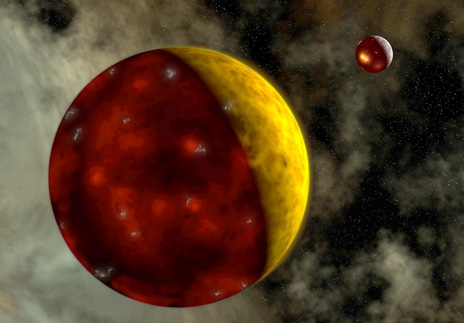
New Yale-led research suggests how and when Earth came to develop one of its most distinct features — rigid tectonic plates — and why Venus, Earth’s twin-like neighbor, never has.
“We think it all comes down to the behavior of tiny grains of minerals within rocks,” said Yale geophysicist David Bercovici, lead author of research published online April 6 in the journal Nature.
Earth has a unique network of shifting plates embedded in its cold and rocky outermost layer, the lithosphere. The motion of these plates drives many Earth processes, including earthquakes and volcanic eruptions, while also stabilizing the planet’s climate and enabling life.
Despite evidence that Earth’s solid surface was already in motion more than 4 billion years ago, global plate tectonics — replete with rigid plates and a variety of plate boundary types — appears not to have developed for a billion years more. And it never has on Venus, although the planet is so similar to Earth in size, composition, and gravity that it’s sometimes called “Earth’s twin sister.”
Bercovici and co-author Yanick Ricard of the Université de Lyon in France argue that in Earth’s early days, mantle convection caused weak zones in the lithosphere. These zones persisted, developed into plate boundaries, and ultimately connected to form a global network of tectonic plates. The weak zones, they argue, resulted from the tendency of mineral grains in rocks to shrink as the rock deforms.
“If the rock gets weaker where it deforms, then deformation focuses there, making the grains shrink faster, in turn making the rock weaker,” Bercovici said. “The weak zone narrows and intensifies until you get a distinct boundary. These are the plate boundaries.”
This process does not happen on Venus, which has no plate visage, because its extremely high surface temperatures cause the grains to grow and weak zones to heal, he said.
To illustrate their hypothesis, the scientists developed a theoretical model that explains how rock grains control the strength and weakness in the lithosphere.
Said Bercovici, “The model uses physics at the 1-millimeter rock grain scale to explain how the whole planet behaves, and how plate tectonics emerged on Earth, but not on her twin.”
The paper is titled “Plate tectonics, damage and inheritance.”
The National Science Foundation and the Agence Nationale de la Recherche provided support for the research.